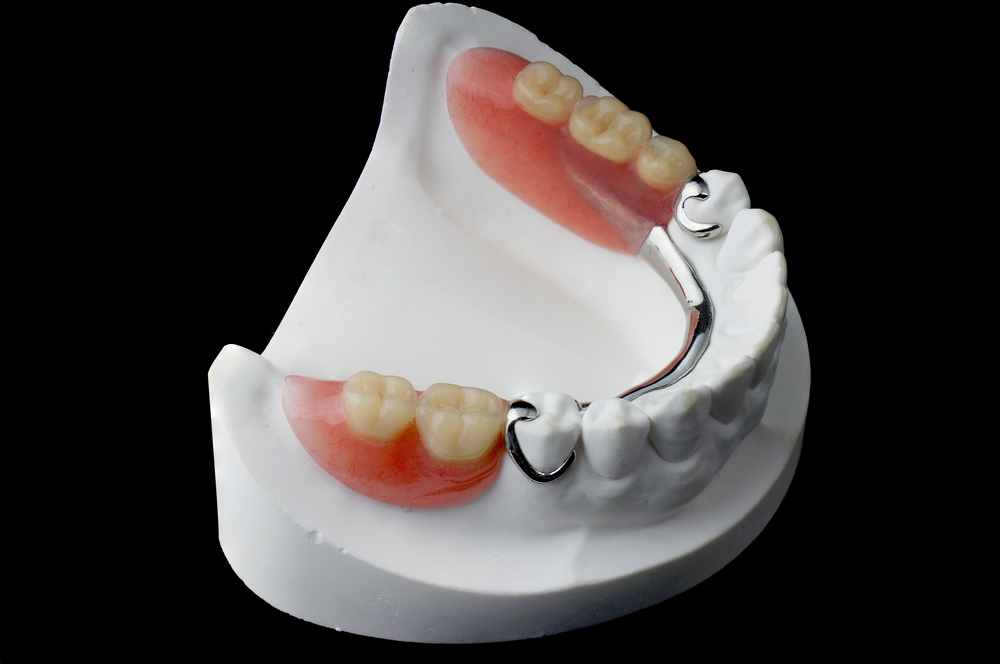
Despite the growing popularity of the use of implants to replace missing teeth, removable dentures still play a large role in treatment. The main representative of this group are cast-metal removable partial dentures, which are a construction consisting of a cast-metal part and an acrylic esthetic portion that replacing teeth and gingiva.
In contrast to the tissue-supported acrylic removable partial dentures (here reference), cast-metal removable partial dentures are characterized by a much better transfer of masticatory forces. A precisely planned and individually-made construction relies to a great extent on the patient’s own teeth, thanks to which the patient can chew food with appropriate sensation provided by the receptors surrounding the natural teeth. In addition, the described denture is characterized by excellent retention, i.e. it requires the use of a large force to remove it from the denture bearing area. This allows a well-made cast-metal denture to replace missing teeth in a stable way, allowing the patient to chew food, speak and laugh without worrying about the denture "falling out". A very important difference, which also makes the cast-metal denture a better solution than a tissue-supported acrylic denture is the ability to reduce the extent of the palatal plate, where in favorable cases, it may exist in the form of a thin metal bar instead of a large acrylic plate characteristic of the tissue-supported acrylic denture. The most classic form of cast-metal denture has clasps in its construction, which on the one hand ensures the above-mentioned stability, but on the other hand results in unaesthetic effect in the anterior area, visible in the smile. For this reason, in individual cases, it is possible to replace the clasps with aesthetic ones hidden in special constructions. These can be latches, bolts or telescopic crowns.
The disadvantage of these dentures is that they need to be removed from the mouth, they are not cemented permanently like bridges, and the patient has to go through an adaptation period to get used to them. This consists of getting used to the presence of a foreign body in the oral cavity (the structure of the prosthesis goes beyond the dental arches with a support zone on the palate and in the sublingual area), learning how to put it on and take it out, as well as utilizing proper hygiene. It is worth noting, however, that after some time the cast-metal denture becomes a restoration highly appreciated by patients, because it allows them to maintain the physiological function of chewing and speech. All the aforementioned inconveniences give way to the great comfort associated with having previously lost teeth.
